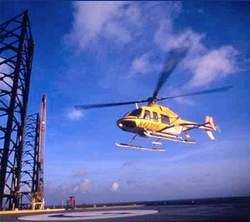In The Shadow Of US Economic Woes, Province Shows Gains In
Production, Orders
One of the world's great aerospace hubs, the Montreal region of
Quebec possesses a workforce of an estimated 42,000 workers
manufacturing everything from jet airliners to helicopters to
flight simulators. But many are wondering if it’s proximity
to the economic slowdown in the United States and the effect of
rising fuel costs will take the region from boom to bust.

In a report Saturday by the Montreal Gazette, the economic
climate of the aerospace-industry rich province of Quebec is faring
significantly better than its neighboring province Ontario, where
the auto making industry is prevalent.
As auto makers cut production due to decreased US demand for
cars, aerospace manufacturing continues to grow. Despite daily news
of airline cutbacks and problems in the United States, aerospace in
Quebec seems unaffected.
The reason is largely because aerospace demand doesn't depend
much on U.S. consumers.
"There's such a difference in economic conditions in Quebec and
Ontario right now, and that's one of the big reasons," says
Adrienne Warren, a senior economist with the Bank of Nova Scotia.
What's more, she thinks Quebec will continue to benefit.
That optimism is based on results of a new Scotiabank study of
the aerospace sector, which finds despite stresses on airlines,
there's still plenty of strength in aerospace.
The sheer size of the order backlog is one reason why strong
aerospace production levels are forecast for up to another two
years. Even with orders from some major carriers being postponed or
cancelled, the backlog still remains due to the bulk of the orders
coming from “healthier non-US carriers” according to
Scotiabank.
Nearly 90 percent of the backlog is attributed to these
companies apart from the US. Because places like Canada, Europe,
and China have enjoyed significant gains in their currency value
against the U.S. dollar, the fuel price leap hasn’t been as
drastic as experienced in the U.S.
While other economies are also slowing, few of them are slumping
as deeply as that of the United States, meaning demand for air
travel should hold up better.
To remain competitive, airlines will need to upgrade to new
aircraft to replace aging airliners that consume more fuel than
other carriers flying newer equipment using up to 30 percent less
fuel. That bodes well for firms like Bombardier, not only because
it manufactures new light regional jets and passenger turboprops,
but also is a world leader in business jet production.
Helped by economic powers like Russia, China and India , orders
for business jets soared to a record last year and this year is
growing even more.
 A boom in resource exploration is increasing demand for
helicopters, which benefits Bell Helicopter Textron of Mirabel,
manufacturer of commercial helicopters.
A boom in resource exploration is increasing demand for
helicopters, which benefits Bell Helicopter Textron of Mirabel,
manufacturer of commercial helicopters.
And with the increase in sales of all new aircraft and
helicopters comes an increased demand for training devices which
translates to more business for Montreal-based CAE, maker of most
of the world's commercial flight simulators.
But if the world economy continues to descend into the doldrums,
the aerospace industry will certainly follow. Analysts consider
aerospace to be a "late-cycle business," meaning that there's a
long lag between the time the rest of the economy feels a downtrend
and the time it's reflected in the aerospace industry. This is due
in part because costly, expensive items like aircraft and flight
simulators are typically ordered years in advance of delivery. By
the time the slowdown reaches aerospace, current economic slowdowns
could well be over.
Certainly that's the pattern so far. The profit measure - return
on equity - keeps improving in the aerospace industry as the
profitability of non-aerospace companies in the S&P 500 index
on the U.S. stock market have been declining for the past 11
months. The same measure for aerospace reached 26 percent in
June, up from 18 percent a year earlier.
 Airborne 04.16.24: RV Update, Affordable Flying Expo, Diamond Lil
Airborne 04.16.24: RV Update, Affordable Flying Expo, Diamond Lil ANN's Daily Aero-Term (04.20.24): Light Gun
ANN's Daily Aero-Term (04.20.24): Light Gun Aero-News: Quote of the Day (04.20.24)
Aero-News: Quote of the Day (04.20.24) Aero-News: Quote of the Day (04.21.24)
Aero-News: Quote of the Day (04.21.24) ANN's Daily Aero-Term (04.21.24): Aircraft Conflict
ANN's Daily Aero-Term (04.21.24): Aircraft Conflict




